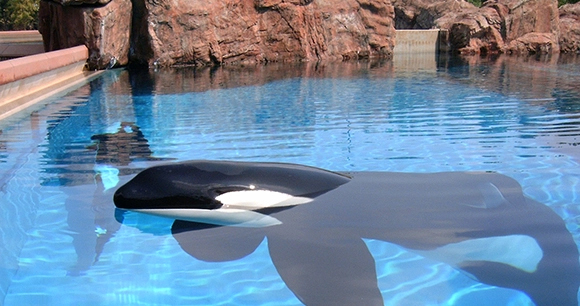
Orcas are too wide-ranging, too socially complex, and simply too large to cope with captivity in concrete tanks that are a tiny fraction the size of their natural home ranges. The compromised welfare of captive orcas is evidenced, among other things, by broken and worn down teeth from chewing on concrete walls and metal gates and collapsed dorsal fins. Orcas in captivity also experience higher mortality rates than in the wild, and are traumatized when family groups—which in nature stay together for life—are separated due to husbandry demands.
To bring an end to these animals' suffering, it is critical that the show must end.
California Law
The Orca Protection Act, AB 2305, was signed into law by Governor Brown in September 2016 and went into effect in January 2017. This groundbreaking law, sponsored by Assemblymember Richard Bloom (now retired), bans holding orcas in captivity for performance or entertainment purposes in California, and ends captive breeding programs and the import/export of orcas and their genetic material into/out of the state. This law was the first of its kind in the United States.
South Carolina Law
A law passed in 1992 originally prohibited “the display of dolphins and porpoises.” In 2000, the law was expanded to include all sea mammals. In 2011, it was narrowed to ban only the display of cetaceans in the state, because Riverbanks Zoo in Columbia wanted to create a sea lion exhibit.
Other State Legislation
In previous years, bills to ban the breeding, import, and export of orcas and other cetaceans for the purposes of entertainment have been introduced in the following states, but have not passed:
- Washington, Senate Bill 5666 (2015-16)
- New York, Senate Bill S6613A (2013-14)
- Connecticut, House Bill 5341 (2020) and House Bill 5156 (2023)
A resolution (House Concurrent Resolution 208) was introduced in Hawaii in 2017 to urge Hawaiian facilities that hold captive cetaceans for entertainment purposes to discontinue breeding and phase out captivity. The resolution, however, would not be binding law.